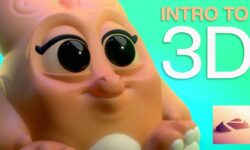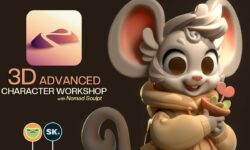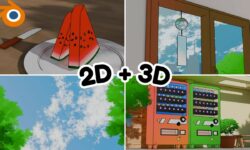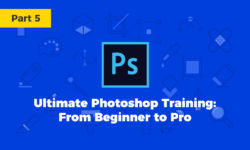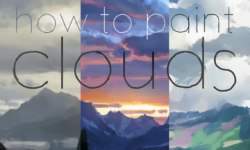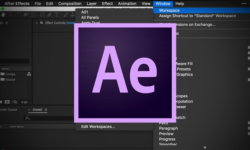Release date:2015, September 22
Duration:07 h 39 m
Author:George Maestri
Skill level:Beginner
Language:English
Exercise files:Yes
Need to learn Maya? Start here. This course covers the latest features in Maya 2016, while giving you a strong foundation in all the core tools, including 3D modeling, texturing, rendering, animation, and more. It starts with the basics of selecting and manipulating objects and organizing scenes, as you learn the interface and explore Maya’s features. Author George Maestri then takes you through polygonal modeling, creating and refining meshes, sculpting, and NURBS modeling. After you begin to understand modeling, George will show you how to create and apply materials to surfaces—adding color, texture, and reflectivity. He’ll then integrate cameras, lighting and depth-of-field effects in the rendering process, and finally, show how to add movement and life to your work with Maya’s animation tools.
Topics include:
- Getting familiar with the Maya interface
- Selecting and manipulating objects
- Creating hierarchies and layers in scenes
- Creating polygonal objects
- Extruding a mesh
- Working with subdivision surfaces
- Sculpting a basic landscape
- NURBs modeling
- Creating and applying materials and textures
- Adding lights and cameras to a scene
- Adding depth of field and motion blur
- Rendering
- Animating in Maya
Table of Contents
Introduction
Welcome 33s
System requirements 28s
Using the exercise files 35s
1. The Maya Interface
Overview of the Maya interface 6m 56s
Working with files and Maya projects 2m 37s
Configuring viewports 7m 51s
Navigation 4m 29s
Using the hotbox and marking menus 3m 4s
Customizing the interface 3m 50s
2. Selecting and Manipulating Objects
Selecting objects 5m 46s
Using the Move tool 5m 3s
Rotating and scaling 2m 20s
Manipulating pivots 3m 21s
Duplicating objects 3m 6s
Understanding the Channel Box 2m 25s
Working with the Attribute Editor 3m 18s
Resetting and freezing transformations 3m 30s
Snapping objects 2m 56s
3. Organizing Maya Scenes
Working with the Outliner 6m 30s
Creating hierarchies 5m 19s
Grouping objects 4m 51s
Using groups as pivots 2m 8s
Understanding the Hypergraph 6m 5s
Hiding and showing objects 5m 37s
Creating layers 4m 38s
Working with selection masks 2m 30s
4. Creating Polygonal Models
Differences between NURBS and polygons 1m 39s
Creating polygonal objects 6m 42s
Selecting polygonal components 5m 58s
Using Soft Select and Reflection 5m 3s
Modeling a low poly tree 5m 33s
Combine and Separate 3m 39s
Boolean tools 5m 57s
5. Modeling Polygonal Meshes
Setting up reference 7m 32s
Modeling against reference 4m 6s
Using the Extrude tools 5m 55s
Using the Bevel tools 2m 52s
Working with edge loops 4m 45s
Modeling symmetrical objects 4m 55s
Merging components and target weld 5m 4s
Mirroring geometry 2m 55s
Extruding along a path 1m 44s
Using the Polygon Bridge tool 1m 54s
6. Refining Polygonal Meshes
Using the Modeling Toolkit 2m 18s
Working with subdivision surfaces 3m 56s
Creating creases in smooth surfaces 2m 32s
Smoothing models and managing detail 4m 3s
Using Edge Flow to smooth geometry 3m 16s
Modeling with nonlinear deformers 4m 57s
Modeling with lattices 3m 6s
Managing object history 4m 28s
7. Sculpting Meshes
Understanding the brush interface 4m 23s
Sculpting a basic landscape 4m 51s
8. NURBS Modeling Techniques
Introducing NURBS modeling and editing 4m 12s
NURBS primitives 5m 27s
Using the NURBS curve tools 7m 9s
Creating radial surfaces with Revolve 5m 51s
Using NURBS loft 3m 30s
Opening and closing curves and surfaces 4m 41s
Creating shapes with NURBS planar 4m 13s
Using NURBS extrude 3m 12s
9. Refining NURBS Models
Using isoparms to refine NURBS surfaces 4m 7s
Extracting NURBS curves from surfaces 3m 56s
Creating curves on a surface 5m 28s
Projecting curves on surfaces 1m 48s
Trimming NURBS surfaces 2m 26s
Converting NURBS to polygons 5m 29s
10. Creating Materials
Overview of Maya rendering 5m 41s
Understanding the basic shader types 9m 20s
Creating and applying maps 6m 12s
Using bitmaps as texture 3m 19s
Working with the Hypershade window 4m 10s
Creating materials in the Hypershade window 4m 30s
Using the Ramp material 4m 6s
Using displacement and bump mapping 4m 15s
Mental ray materials 6m 3s
11. Applying Materials and Textures
Applying multiple materials to polygonal objects 3m 36s
Basic UV mapping for polygonal objects 6m 11s
Using cylindrical projections on polygons 4m 1s
Understanding the UV Editor 4m 36s
Mapping objects in the UV Editor 8m 7s
Projecting textures on NURBS surfaces 6m 5s
3D painting 6m 26s
12. Rendering in Maya
Render Settings menu 5m 19s
Lights and lighting types in Maya 6m 2s
Creating shadows 4m 36s
Using falloff for realistic lighting 4m 14s
Understanding the basics of cameras 8m 39s
Adding depth of field 5m 28s
Using Motion Blur 3m 33s
Raytracing reflections and refractions 5m 49s
Using indirect lighting for softer shadows 2m 46s
Creating image-based lighting 4m 15s
Batch rendering 4m 22s
13. Animating in Maya
Understanding the animation interface 5m 56s
Animating objects using Set Key 5m 20s
Modifying keys in the Graph Editor 6m 14s
Modifying keys in the Dope Sheet 2m 38s
Creating breakdown keys 2m 30s
Ghosting animation 2m 42s
Using the Grease Pencil tool 2m 7s
Animating objects along spline paths 5m 30s
Animation playback using Playblast 2m 6s
Creating animation cycles 4m 39s
Adding sound to animations 2m 49s
Conclusion
Next steps 16s
Watch online or Download for Free



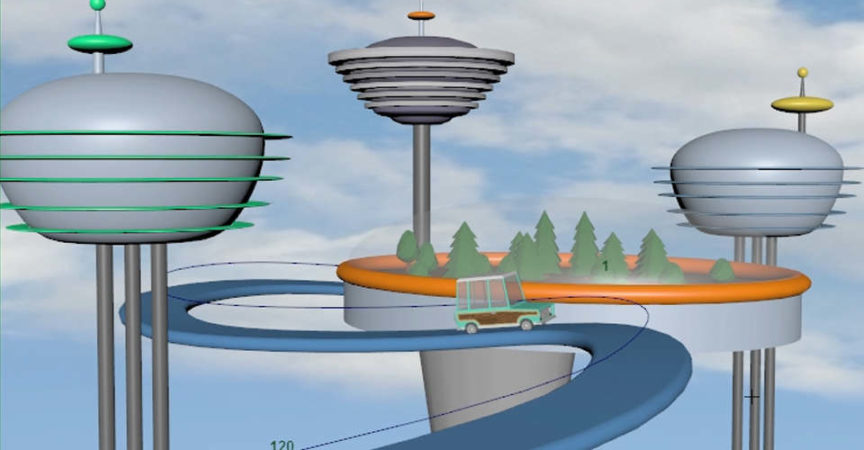

 Channel
Channel